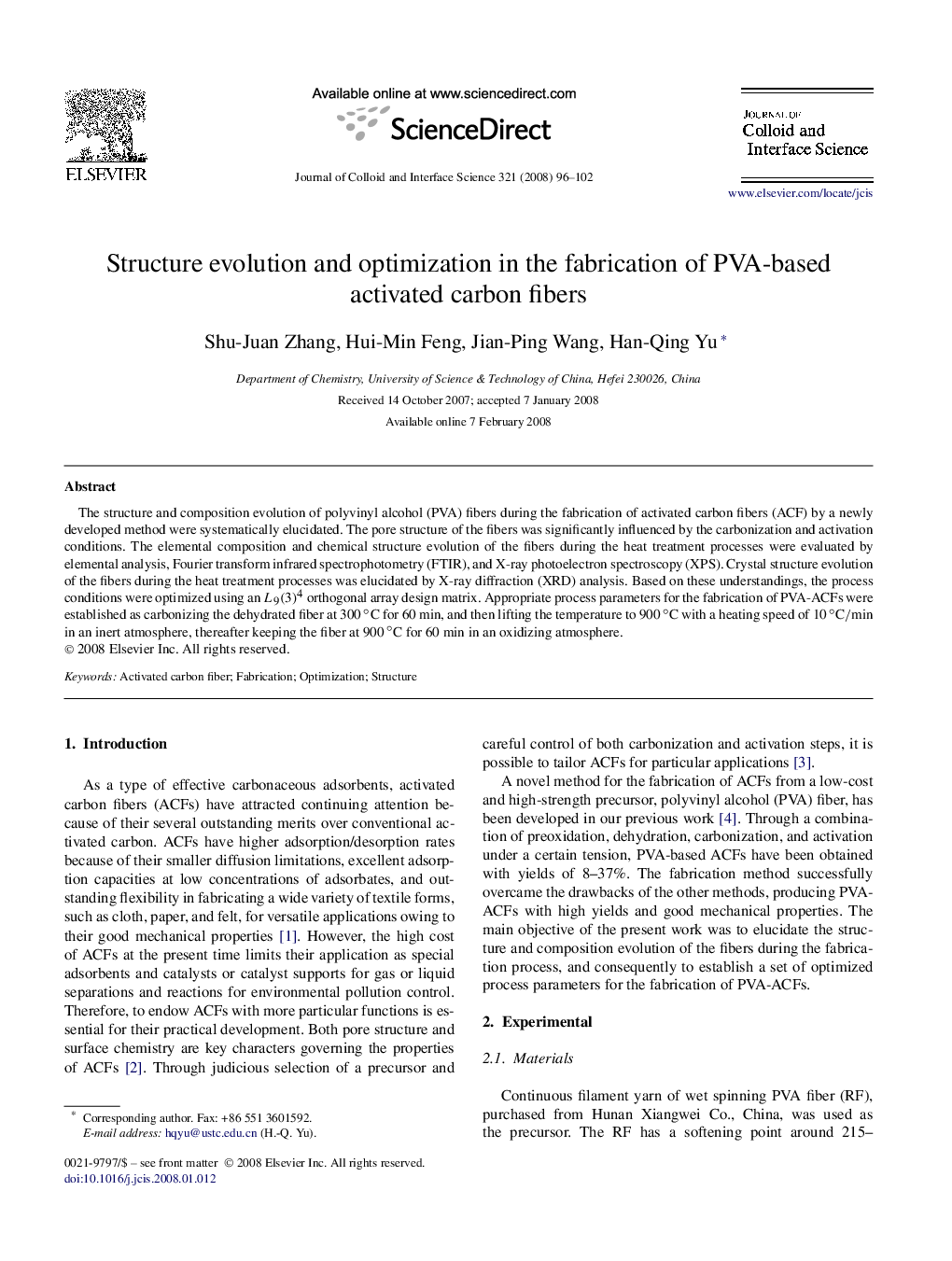| Article ID | Journal | Published Year | Pages | File Type |
|---|---|---|---|---|
| 611198 | Journal of Colloid and Interface Science | 2008 | 7 Pages |
The structure and composition evolution of polyvinyl alcohol (PVA) fibers during the fabrication of activated carbon fibers (ACF) by a newly developed method were systematically elucidated. The pore structure of the fibers was significantly influenced by the carbonization and activation conditions. The elemental composition and chemical structure evolution of the fibers during the heat treatment processes were evaluated by elemental analysis, Fourier transform infrared spectrophotometry (FTIR), and X-ray photoelectron spectroscopy (XPS). Crystal structure evolution of the fibers during the heat treatment processes was elucidated by X-ray diffraction (XRD) analysis. Based on these understandings, the process conditions were optimized using an L9(3)4L9(3)4 orthogonal array design matrix. Appropriate process parameters for the fabrication of PVA-ACFs were established as carbonizing the dehydrated fiber at 300 °C for 60 min, and then lifting the temperature to 900 °C with a heating speed of 10 °C/min in an inert atmosphere, thereafter keeping the fiber at 900 °C for 60 min in an oxidizing atmosphere.
Graphical abstractThe pore structure of PVA-ACF was significantly influenced by the carbonization and activation conditions. Based on such this understanding, the process conditions for the fabrication of PVA-ACF were optimized.Figure optionsDownload full-size imageDownload as PowerPoint slide
